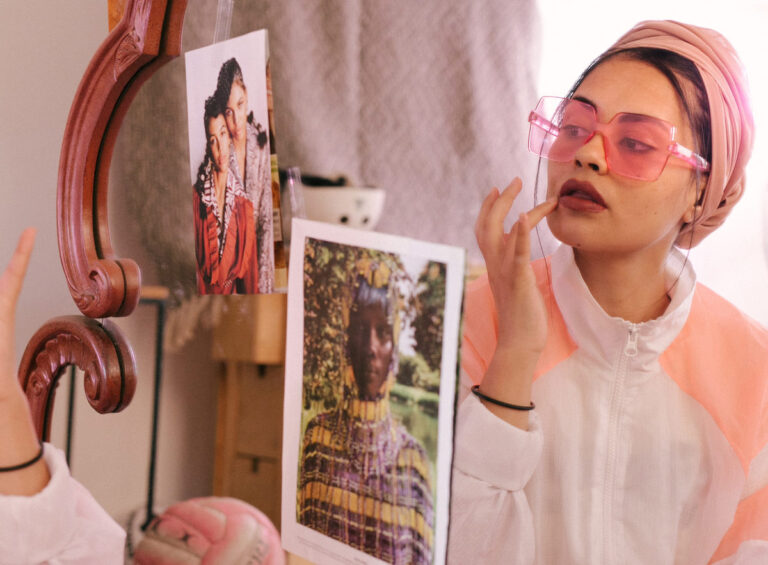Fungal acne: how to identify and treat it
What is fungal acne?
Technically, fungal acne is neither a type of acne nor has it got anything to do with fungus—it is a type of infection that happens in your skin’s hair follicles. It’s also referred to as Pityrosporum folliculitis or Malassezia folliculitis. It tends to appear as small red bumps (often mistaken for actual pimples) that don’t vary much in shape or size, along with itching in most cases. It can also cause whiteheads and skin irritation.
It’s often confused for acne vulgaris, which is more commonly known as regular acne, although both are two different conditions caused by two different things. To put it simply, they won’t respond to the same treatment. It’s also important to note that if you keep using anti-acne treatments against fungal acne, chances are you’ll end up making it worse than before.
That’s why it’s crucial for you to understand what fungal acne looks like and how it develops in order to be able to treat it properly.
Voir cette publication sur Instagram
How can I identify fungal acne?
As mentioned above, fungal acne isn’t hard to treat—it’s knowing what you’re dealing with that can be difficult. One sign your acne is fungal and not of the ‘normal’ acne is if it’s itchy. Also, if you spot whiteheads or blackheads that are roughly a millimetre big, there are strong chances that it could be fungal. Pus-filled bumps caused by fungal acne tend to be nearly all the same size, whereas bacterial acne can cause pimples and whiteheads of varying sizes.
Fungal acne usually shows up on the chest, back, or upper arms, but can also occur on the face, just like typical acne can. Furthermore, it often appears in clusters of small whiteheads. Regular acne is less clustered and more sparse.
Fungal acne is the result of yeast growth, so you may experience other yeast-related conditions, like psoriasis and dandruff. This can help you determine whether your breakouts are from yeast or another cause. But when does the infection of hair follicles develop and acne-like symptoms show up?
What are the causes of fungal acne?
There are a few reasons you may be getting fungal acne, here’s what they are:
Trapped moisture, sweat: Wearing sweaty workout clothes for too long can encourage yeast growth. Re-wearing workout clothes without washing them may also expose your skin to fungi that have grown in the clothes. Regularly wearing non-breathable clothes can also encourage extra sweat and moisture, which can foster a skin environment ripe for yeast growth.
Medication: If you take antibiotics, the bacteria on your skin can be reduced. That can allow for the overgrowth of a fungus.
Suppressed immune system: People with compromised immune systems may be more likely to develop fungal acne.
Diet changes: Fungi and yeast feed on carbohydrates, so balancing your intake of sweets and carb-rich foods may help slow fungal growth.
Heat and humidity: People living in hot climates, where sweating is more likely, may experience fungal acne more frequently.
Contact with others: Fungal acne might be contagious (after all, yeast is known for spreading). If you’ve had bodily contact with someone who has fungal acne, it may be the cause of yours.
How should I treat fungal acne?
To determine if your symptoms are a result of fungal acne, a dermatologist will ask you about the symptoms you’re experiencing. This will likely include how long you’ve had the breakout, what you’ve used to treat it so far and what symptoms you’re experiencing.
In some cases, your dermatologist might also want to do a simple, painless skin scraping in order to examine it under a microscope or take a skin sample. From there, they’ll offer you different treatment options. To properly treat the fungal infection, you need to restore the balance between yeast and bacteria on the skin.
Several techniques can help, such as: showering more regularly, wearing looser clothes, trying a different body wash and shampoo, exfoliating excess dirt and oil, and using over the counter antifungal treatments.
If you’ve attempted to treat your suspected fungal acne at home and the breakout persists for more than three weeks, call your dermatologist. Although it’s rare, dermatologists sometimes call in an oral antifungal treatment like Fluconazole (if you’ve ever been prescribed medication for a vaginal yeast infection, this is likely what you took).
How can I prevent fungal acne?
While fungal acne can’t be prevented completely, these steps may help reduce the chances of a return infection:
Use a dandruff shampoo regularly: This regular rinse may help maintain a healthy balance of yeast on your skin. Once the breakout is gone, you can cut back on how often you use the shampoo as a body wash to as little as once a week.
Wear breathable fabrics: Breathable fabrics allow for airflow, which can cut down on warm, moist environments that encourage fungus growth. If changing your clothing options helps treat fungal acne, consider wearing similar types of clothing.
Shower after sweating: A quick rinse after a workout or sweaty day at work can help prevent yeast growth issues.
Eat a balanced diet: Fungi like yeast thrive on sugary carbohydrates, so balance your diet with fruits, vegetables, and proteins to help discourage overgrowth.






